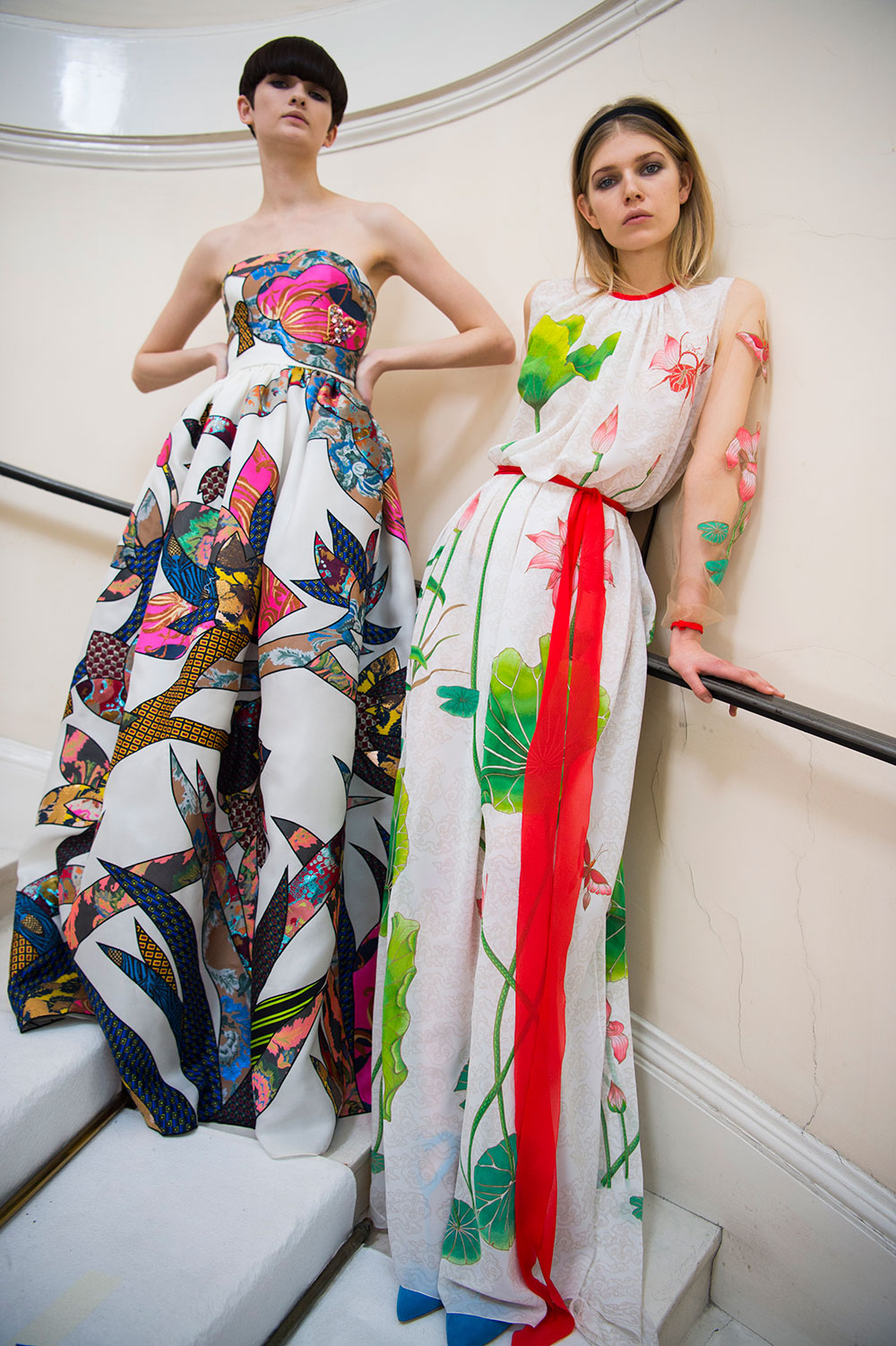Document highlights moments of marvel behind Paris’s legendary week of couture.
Dior Haute Couture
For her first couture outing with Dior, Maria Grazia Chiuri installed a topiary maze inside the gardens of Musée Rodin. There, a moss-covered world awaited, complete with a magical tree adorned with shiny ornaments. Chiuri looked deep into Monsieur Dior’s ethos, taking to heart his words: “After women, flowers are the most divine of creations.” The house tapped artist Claude Lalanne to make whimsical, floral and fauna-imbued jewelry that decorated models’ necks. The collection started on a dark note, with sheer masks—later that evening the house held a masquerade ball to celebrate the collection—and sculptural black suits consisting of culottes and hourglass jackets. Chiuri used Dior’s signature silhouettes, like the extreme curves of the groundbreaking 1947 New Look collection, which she then updated by adding pleats and ruffles to the jackets. The show transitioned after into a more ethereal mood, with gowns made from layers of tulle and embroidered flowers, beautifully capturing the mood of the collection. Feathered and floral headpieces topped each look of the overtly feminine collection—an appropriate tone, considering Chiuri’s placement as Dior’s first female leader.
Armani Privé
Is orange the new black? That seemed to be the question that Giorgio Armani pondered for his Spring 2017 couture collection, by selecting the autumn hue as the starring role. Two Oscar nominees—Nicole Kidman and Isabelle Huppert—sat front row, surely eyeing the gowns that they would presumably wear while marching down the red carpet at the end of February. Using orange as a collection’s motif comes with the risk of thoughts of Halloween, but that was avoided thanks to the various shades of its kind. Tangerine? Check. Cantaloupe? Check. Marigold? Check. Armani toyed with it in every way possible, from Chinese buttons on jackets, to artfully draped pleats, and shimmery fabrics and structured leather. Even the patterns played in well with the color.
Giambattista Valli
The typical couture client is a woman of a certain lifestyle—one that is moneyed, well traveled, and full of the finer things in life—and Giambattista Valli knows that quite well. So much so, that he opened his Spring 2017 couture show with silk duchesse cocktail minidresses accented with creases that stemmed from being stored in trunks during a glamorous. Cocktail attire, some embroidered with flowers, others accented with a simple bow, or finished with full tulle trains, came out, paving the way for the following ensembles: draped, silk dresses with trains and sheer, billowy, evening gowns with prints, embroidered with sequins and flowers. Finally, the full, voluminous ball gowns that Valli is known for followed in all their pastel glory, with cascading ruffles that compare to fluffy clouds or cotton candy, a fitting end for his globetrotting woman.
Schiaparelli
At home, Elsa Schiaparelli leaned towards a comfortable yet chic uniform of choice, donning Japanese kimonos and Chinese hanfus. Design Director Bertrand Guyon took cues from this loungewear and injected them into the fashion house’s Spring/Summer 2017 couture collection. Bold Chinoiserie graphics arrived on flowing dresses, while tigers and dragons made appearances on embroidered silk jackets. With the classic came the contemporary, through looks that captured two top trends of the moment: thigh-high boots and shocking pink bomber jackets. All the Surrealist elements of Schiaparelli’s aesthetic, as well as her signature color too were infused as Guyon gave a nod to Jean Cocteau’s 1930 film “The Blood of a Poet” and Guy Bourdin in the forms of keyholes, hands, and red lips. Perhaps most obvious of all was a dress embroidered with a lobster, an apparent reference to its namesake’s 1937 collaboration with Salvador Dalí.
Vetements
If Demna Gvasalia knows anything, it’s how to play the fashion crowd, and for Fall 2017—Vetements’s second showing during couture week — the designer took a multilayered approach. Vetements commented on the global migration crisis through its invitations, which arrived in a nondescript white envelope. Inside was an identification card bearing the name of the invitee but with a completely different identity—ours depicted a German woman twice our age—along with a list of nearly 40 stereotypes of people from all around the world. The bro, the tourist, and the emo, etc: exactly who marched out on the runway for the show. The Milanesa, an older woman donning a knee-length mink coat, opened the show. Of the various people that ran out after, the green punk, complete with day-glow orange electroshock spiky hair, stood out the most. The collection showed what Gvasalia does best: taking the ordinary and elevating it, through oversized silhouettes, strategic draping, and edgy styling.






































